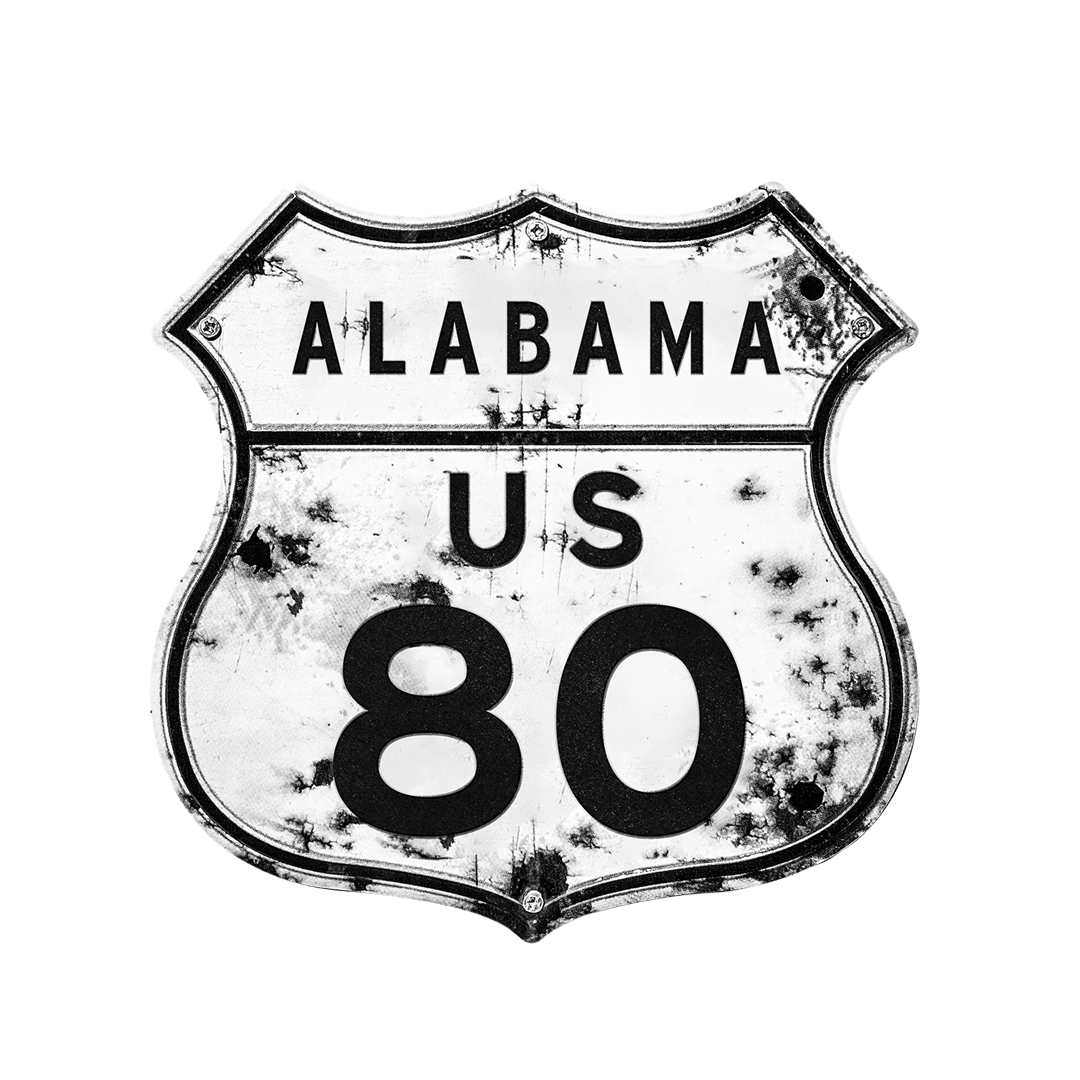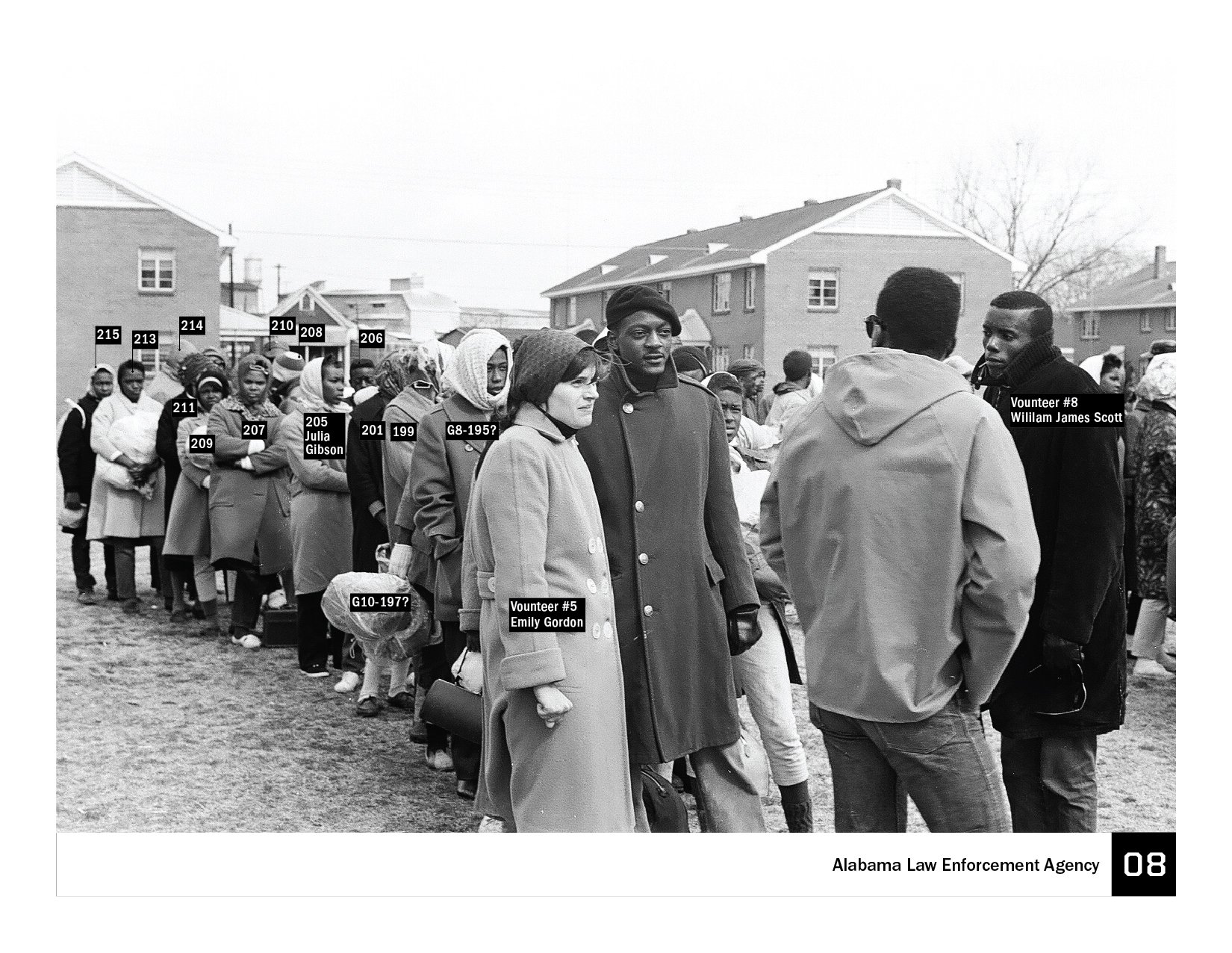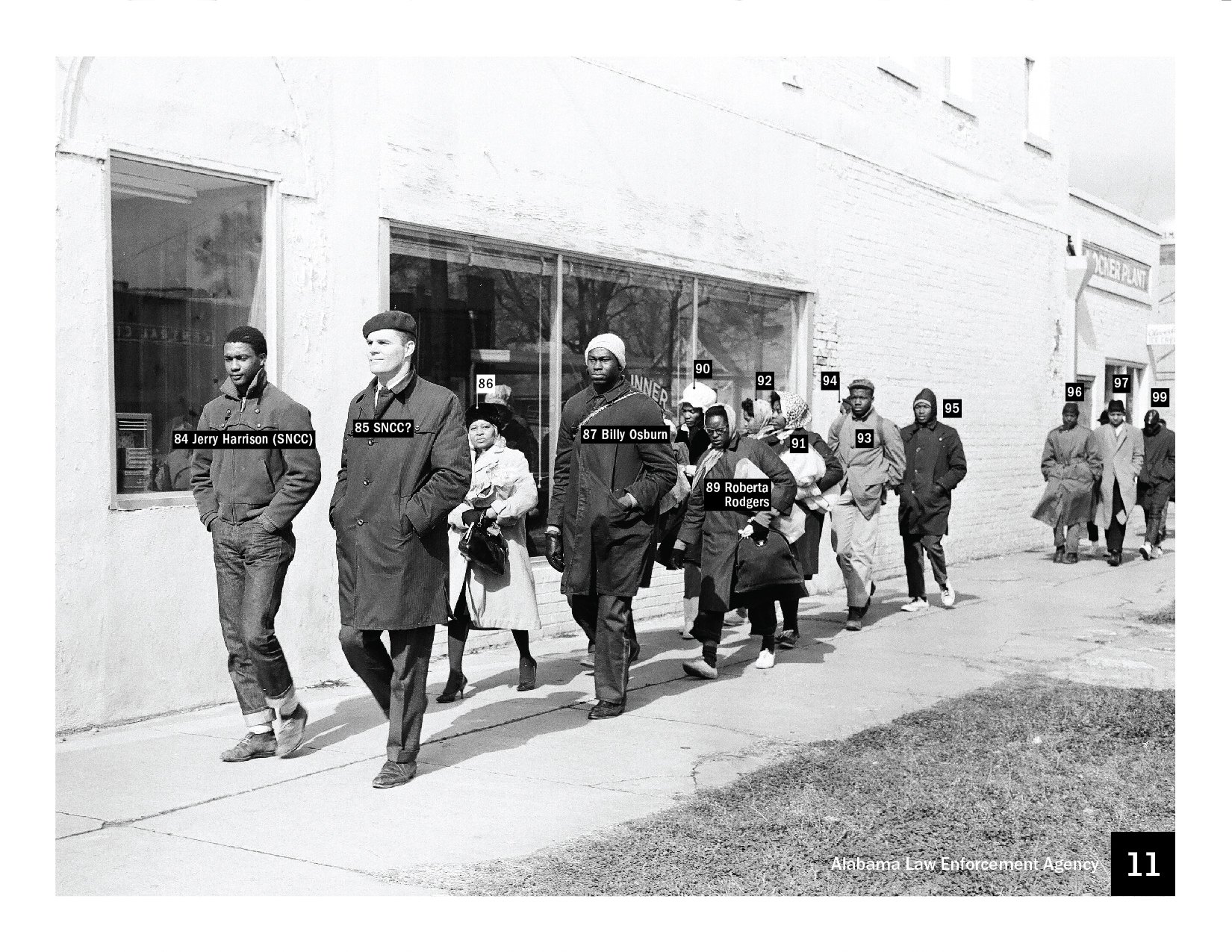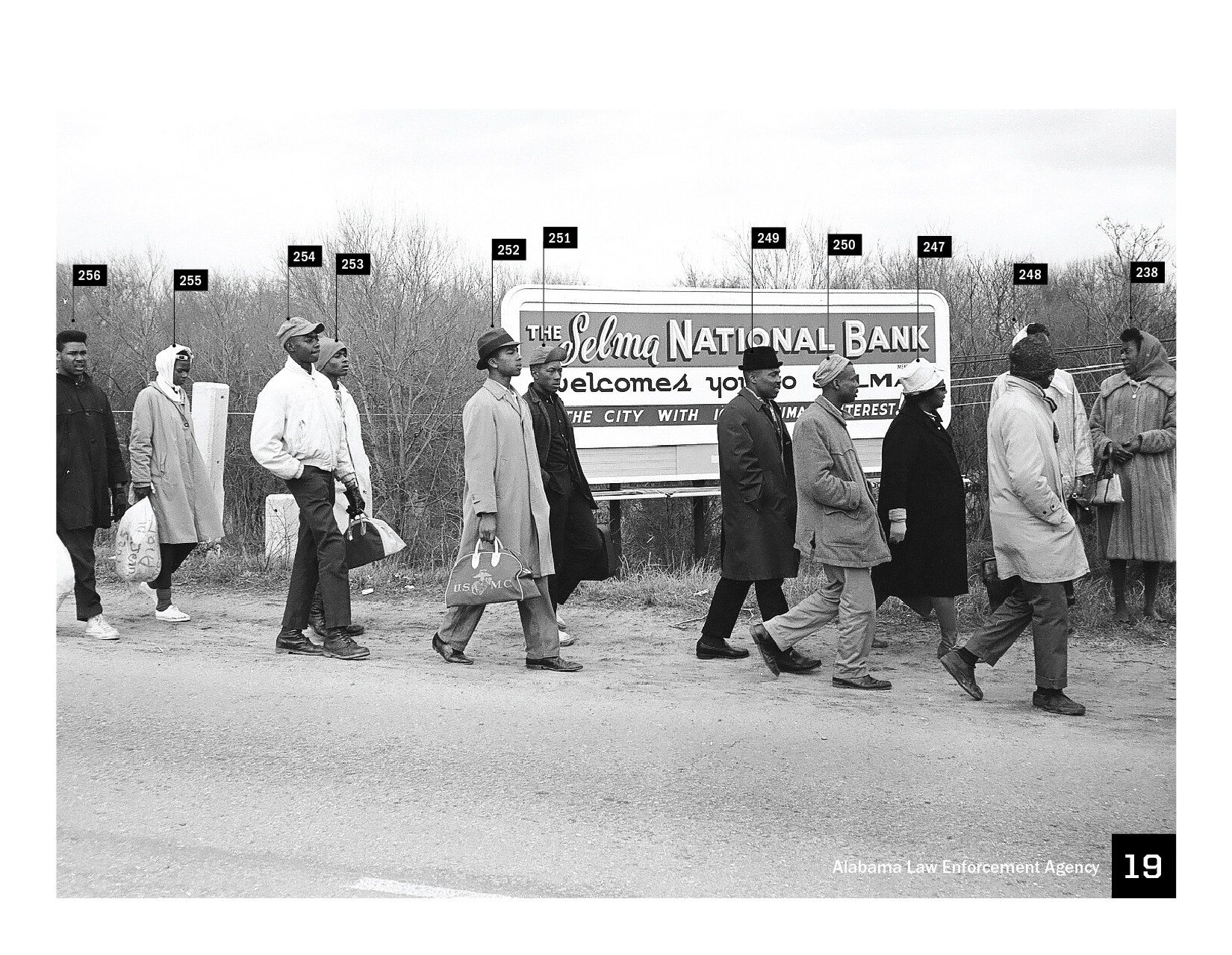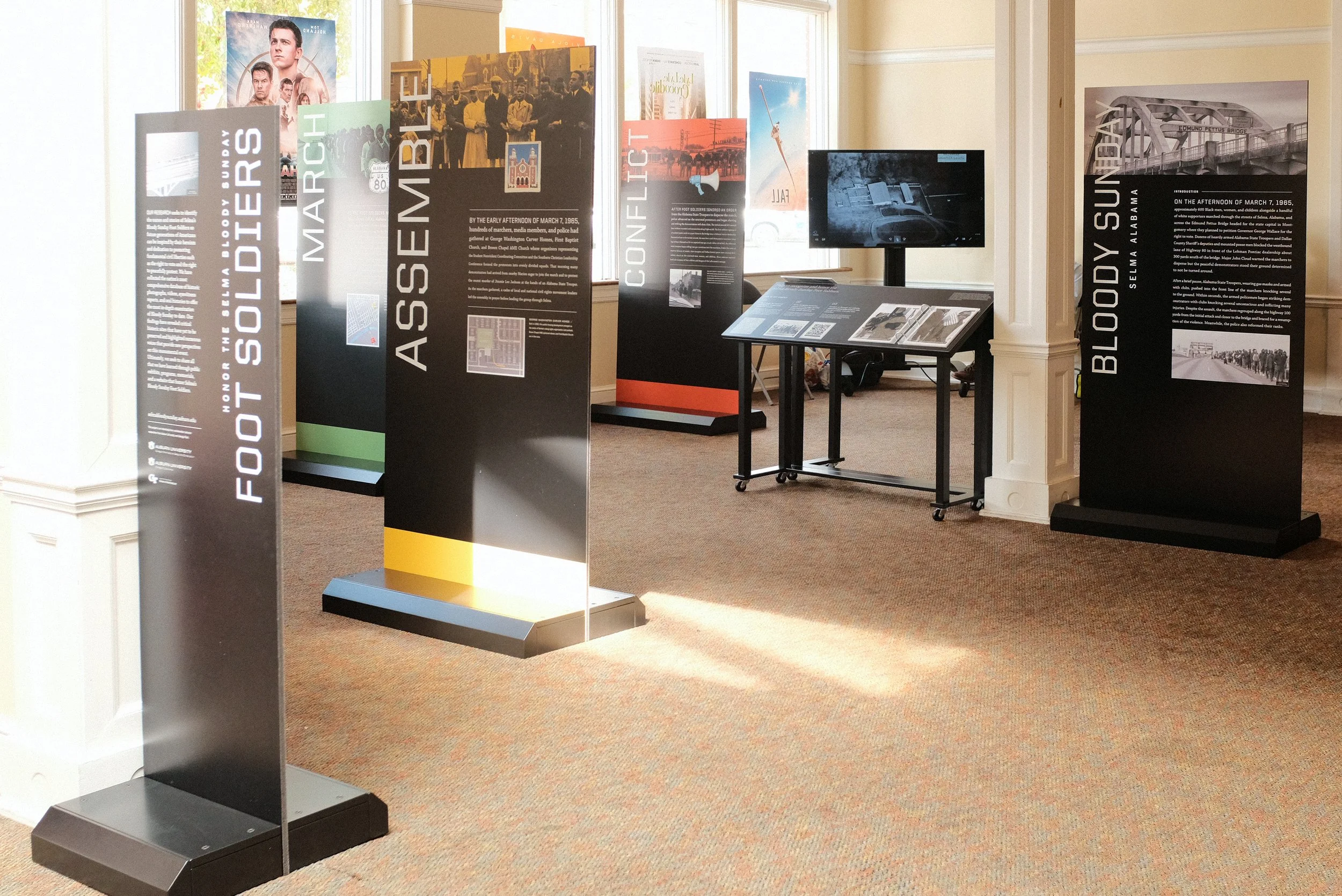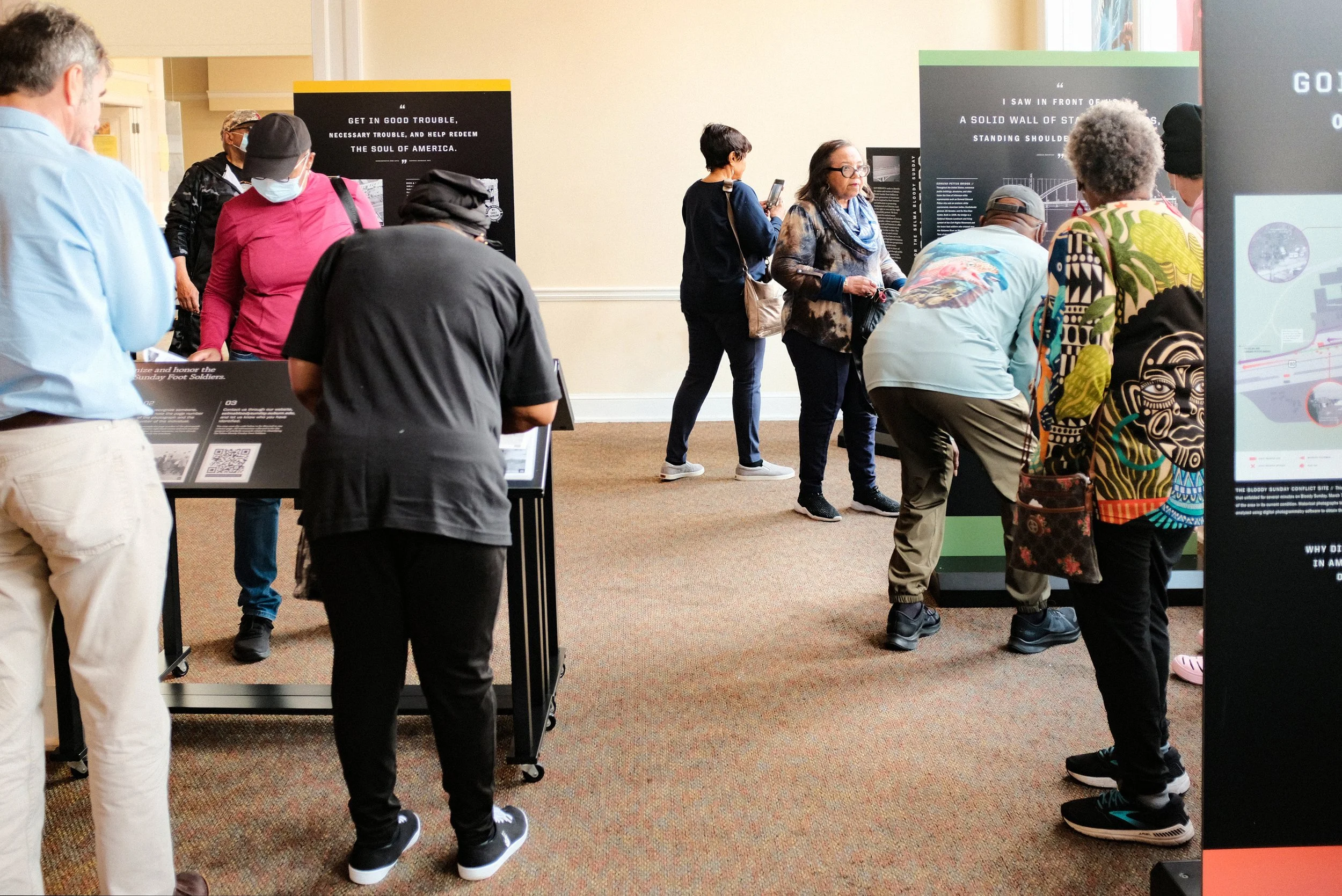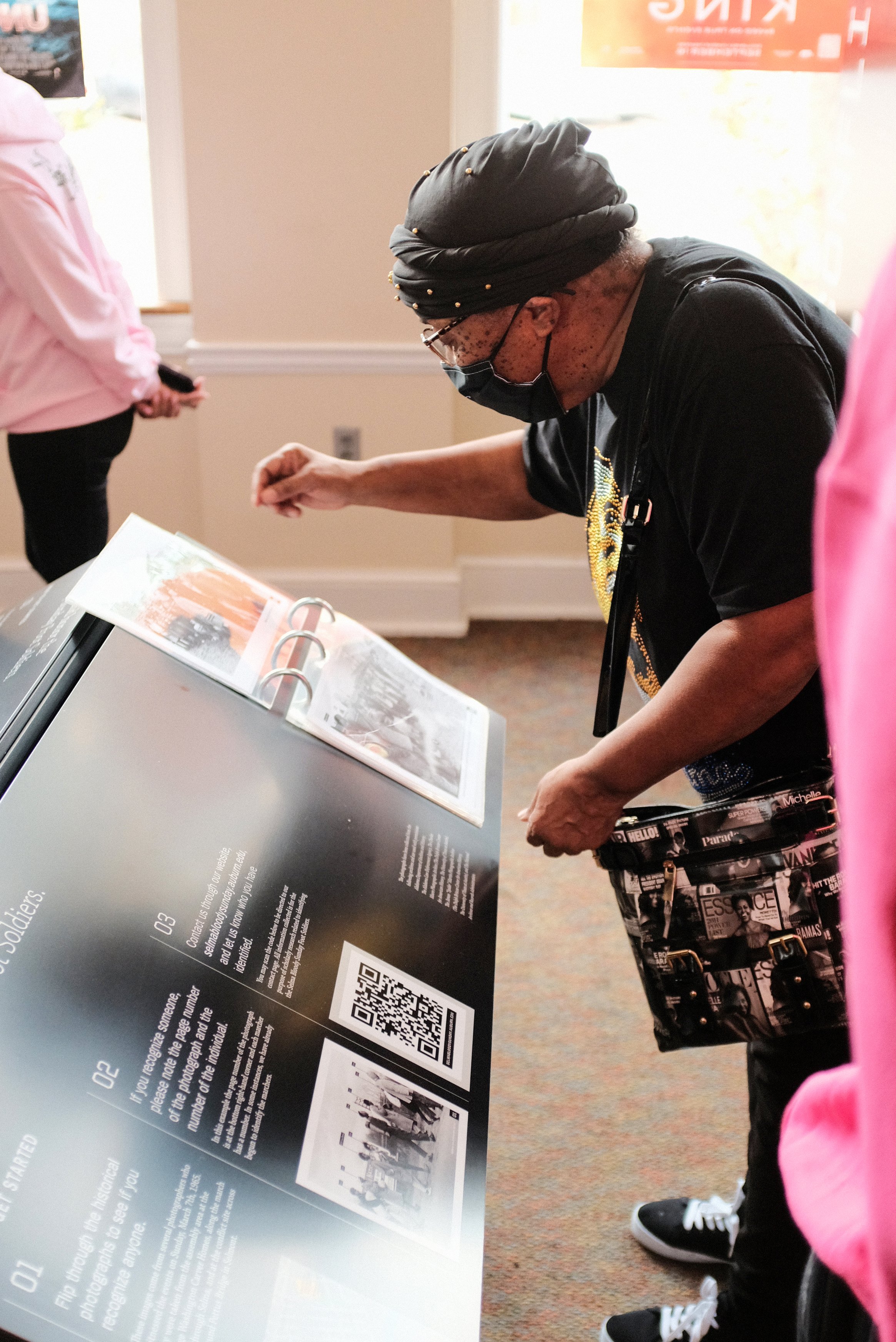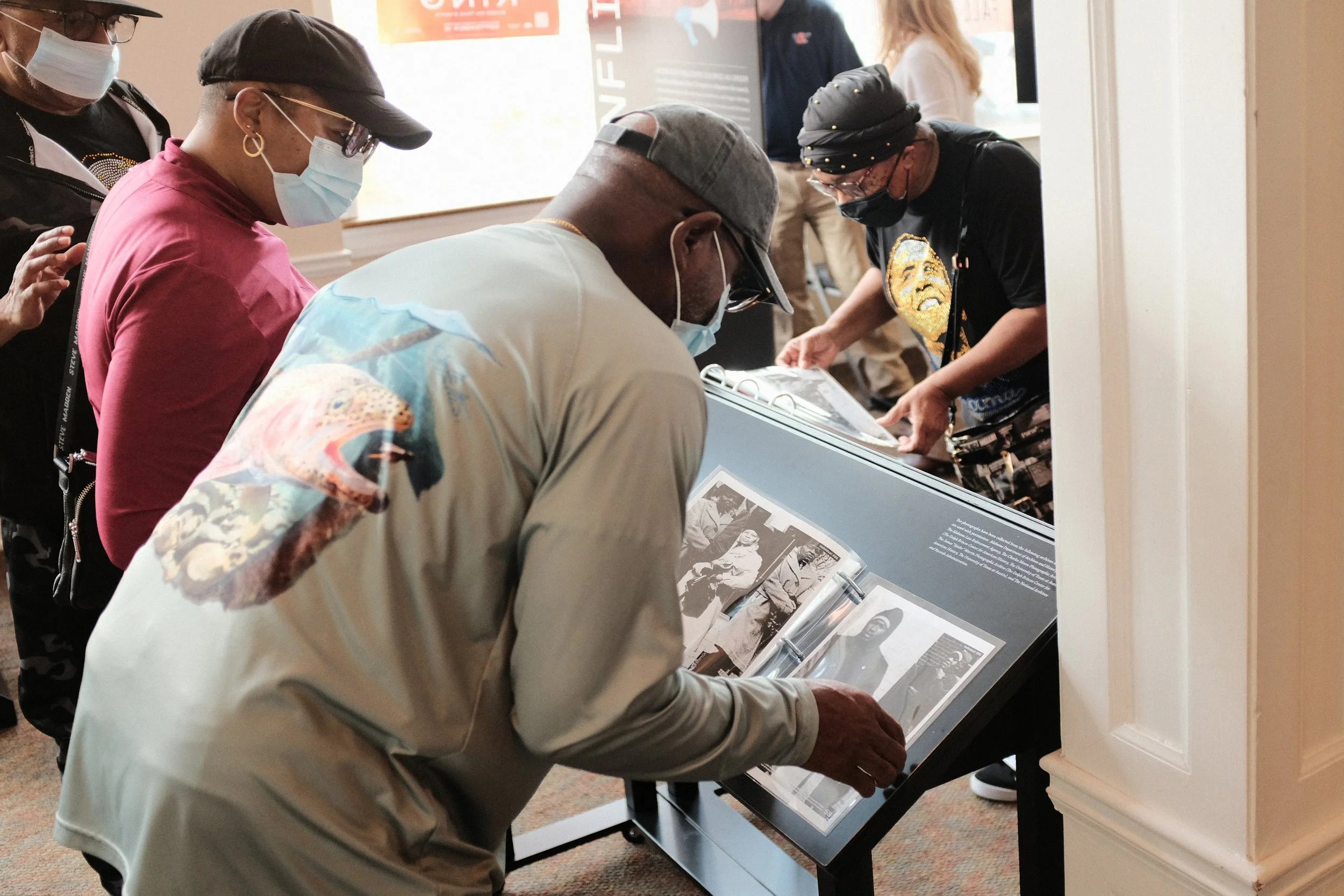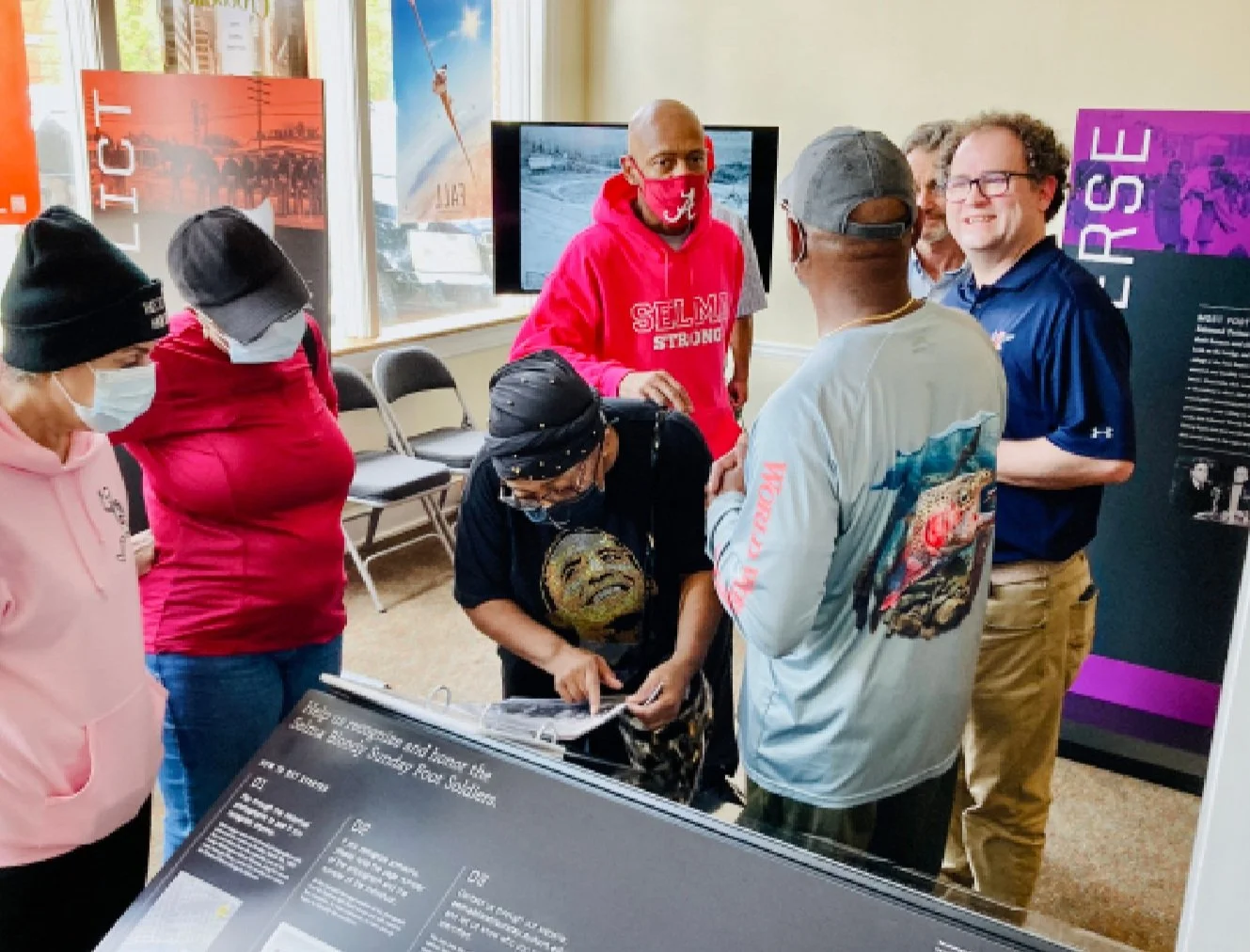Selma Bloody Sunday Foot Soldiers Traveling Exhibit
On March 7, 1965, John Lewis, Hosea Williams and a group of approximately 600 peaceful marchers were confronted by Alabama State Troopers armed with tear gas and metal batons as they began a march for equality toward Montgomery. The research seeks to identify the names and stories of Selma’s Bloody Sunday Foot Soldiers so future generations of Americans can be inspired by their heroism and dedication to promoting fundamental civil liberties such as the right to vote and the right to peacefully protest.
Collaborators
Auburn University McWhorter School of Building Science
- Richard Burt
— Junshan Liu
Auburn University College of Liberal Arts
– Elijah Gaddis
– Keith Hébert
GA Tech School of Architecture
- Danielle Wilkens

In 2016, the research team began using historical photos and video footage, photogrammetry software, laser scanners, drones and design concepts and technology to survey and map the area where the confrontation occurred.
The team has also compiled the largest archive of photographs from that day. These images from photojournalists such as Spider Martin and Charles Moore, as well as surveillance photographs from the Alabama Law Enforcement and the FBI have been used to identify many of the otherwise anonymous foot soldiers who marched that day.
Selma Bloody Sunday is mostly remembered by the horrific images of the conflict between Alabama State Troopers and the peaceful marchers, but the events leading up to and after the conflict are lesser well known. In order to tell the most comprehensive story of that day, the project narrative was divide into four main sections: The Assembly of marchers and press at the George Washington Carver Housing Complex, the March through downtown Selma and over the Edmund Pettus Bridge, the Conflict between the marchers and Alabama State Troopers at the hundreds of feet past the bridge, and the forced Dispersement of the marchers by law enforcement and subsequent chasing by horse mounted posse men and Alabama State Troopers back across the Edmund Pettus Bridge and into the marcher’s homes and churches.
The present day condition of the conflict site east of the Edmund Pettus Bridge is in unincorporated Selmont, AL. Largely unknown to the public, the FBI had two surveillance plans circling overhead during the march. In 2022, the research team obtain access to FBI aerial surveillance photos from a freedom of information requests.
This map represents the conflict between Marchers and State Troopers that unfolded for several minutes on Bloody Sunday, March 7th, 1965. It has been recreated from an initial laser scanning survey of the area in its current condition. Historical photographs taken during the conflict by the news media and law enforcement were analyzed using digital photogrammetry software to obtain the location of buildings, stationary vehicles, and individuals as they existed on that day. Film footage from one of the three cameras taken at a high angle, were cut into a single unedited video to establish an approximate timeline of the conflict. The aerial photographs taken by the FBI confirmed the movements of individuals and the sequence of events.
The typographic system takes cues from several historical sources. The headline font, United Sans, is a utilitarian font that shares many of the same machined characteristics of the raised bronzed lettering that adorns the Edmund Pettus Bridge. Franklin Gothic was selected due its widespread usage in American newspapers from the middle of the century.
A four color palette was selected to align with the four main narrative sections of the project. The palette starts with energetic and hopeful hues that transition into more urgent and somber hues.
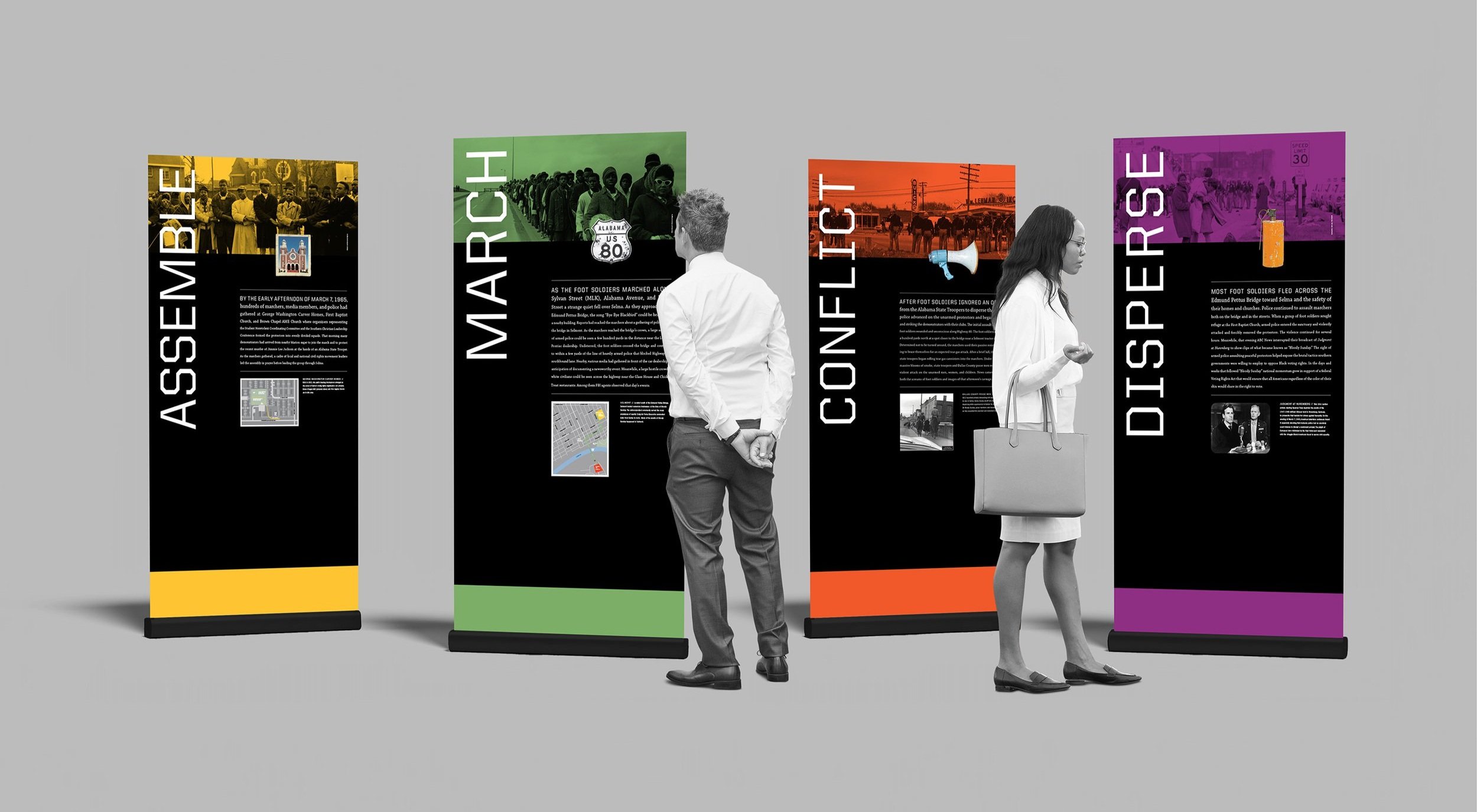
The traveling exhibit consists of freestanding panels and waist-high reader rails. The panels tell the story of the days events and provides anecdotes and contextual information sourced from interviews and archival research. The reader rail has a updatable binder to hold photographs of unidentified marchers which are indexed to a larger database. Visitors can look through photos and are able to send any information through a online contact form accessible from their own phones.

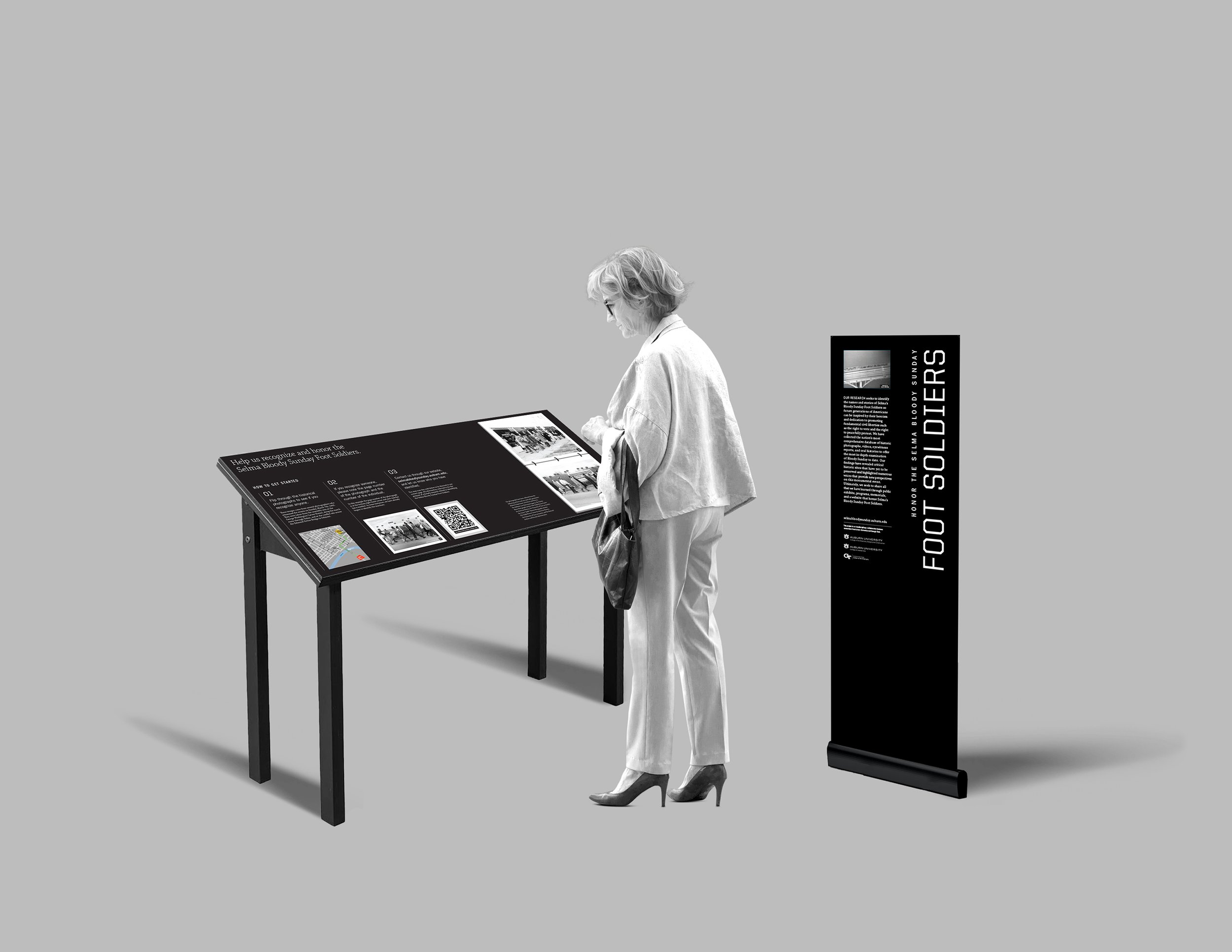




The exhibit’s inaugural public display was at the Walton Theater in Selma during the 58th Annual Bridge Crossing Jubilee held on March 3–6th, 2023. This event is held every year to commemorate Bloody Sunday. The project is continuing to be added to and additional grants are being awarded to continue this important work.
Selected Press
Auburn-led research team to unveil enhanced declassified ‘Bloody Sunday’ FBI photos in Selma, Alabama, ahead of civil rights event’s 58th anniversary
More than 150 images from that historic event and corresponding events will be part of the team’s Bloody Sunday research display at the Selma Bridge Crossing Jubilee March 3-5 in Selma, Alabama, just days before the 58th anniversary of the incident.
The Selma Project: An interdisciplinary effort to preserve historical significance of Bloody Sunday
Approaching Selma, Alabama, from the south on Highway 80, the iconic Edmund Pettus Bridge looms large on the horizon as travelers begin the incline to cross the Alabama River. That was where, on March 7, 1965, John Lewis, Hosea Williams and a group of approximately 600 marchers were confronted by Alabama State Troopers armed with tear gas and metal batons as they began a march for equality toward Montgomery.


